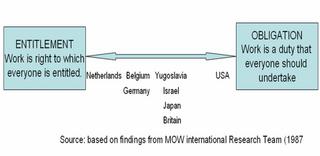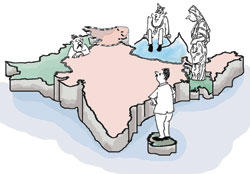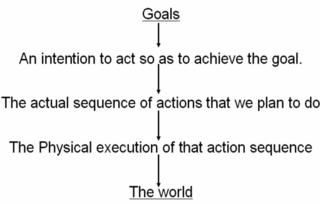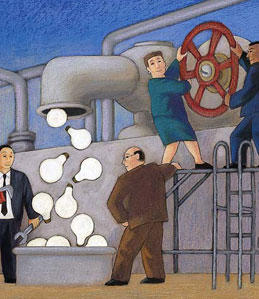With the availability of wide range of manufacturing infrastructure, digital computing devices become increasingly affordable with vast processing power. General computing devices have been developed to reduce manufacturing costs and to increase flexibility, performance and usage base. These digital devices are set up to perform many routine tasks and can be found in almost every intelligent machine we use such as automobiles, telephone system, computers and so on.
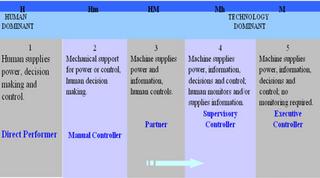

(Note: H = Human and M = Machine) Changing Levels of Automation (Kleiner and Shewchuk, 2001)
In our daily working process, we have entered a new period where technologies are good for the environment as well as are good for business. This statements arise such kind of exciting questions: are ther e any company which have started to realised that consumers are using less energy that generates less revenue, so investing in more environmentally sound products which cost more to produce? Will it actually benefit the country’s economy? May be the old manufacturing and product development view of a plant’s operating goals were clear: Maximize profits by running a single product for as long as possible and then change over lines and run the next product for as long as possible. A famous phrase was pointed by Henry Ford that in customers’ point of view, they could have any product, in any colour …... as long as they wanted the product that was in stock and the colour they preferred was black.
e any company which have started to realised that consumers are using less energy that generates less revenue, so investing in more environmentally sound products which cost more to produce? Will it actually benefit the country’s economy? May be the old manufacturing and product development view of a plant’s operating goals were clear: Maximize profits by running a single product for as long as possible and then change over lines and run the next product for as long as possible. A famous phrase was pointed by Henry Ford that in customers’ point of view, they could have any product, in any colour …... as long as they wanted the product that was in stock and the colour they preferred was black.
This can make clear that may be the old “more is better” idea is starting to fade away with Less is the new more ecomagination.
 e any company which have started to realised that consumers are using less energy that generates less revenue, so investing in more environmentally sound products which cost more to produce? Will it actually benefit the country’s economy? May be the old manufacturing and product development view of a plant’s operating goals were clear: Maximize profits by running a single product for as long as possible and then change over lines and run the next product for as long as possible. A famous phrase was pointed by Henry Ford that in customers’ point of view, they could have any product, in any colour …... as long as they wanted the product that was in stock and the colour they preferred was black.
e any company which have started to realised that consumers are using less energy that generates less revenue, so investing in more environmentally sound products which cost more to produce? Will it actually benefit the country’s economy? May be the old manufacturing and product development view of a plant’s operating goals were clear: Maximize profits by running a single product for as long as possible and then change over lines and run the next product for as long as possible. A famous phrase was pointed by Henry Ford that in customers’ point of view, they could have any product, in any colour …... as long as they wanted the product that was in stock and the colour they preferred was black.This can make clear that may be the old “more is better” idea is starting to fade away with Less is the new more ecomagination.
